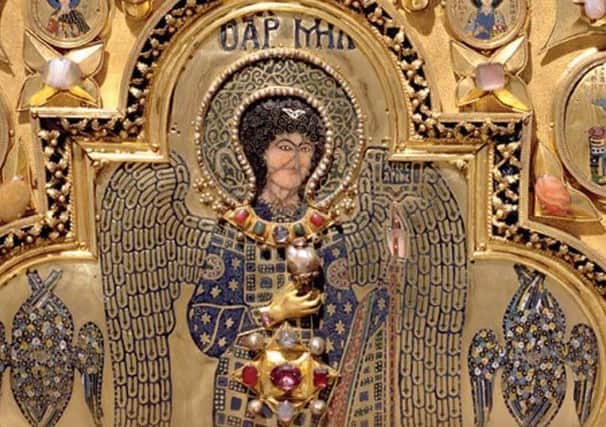Book reviews: Byzantium: A Very Short Introduction | Lost World of Byzantium


Byzantium: A Very Short Introduction
By Peter Sarris
Oxford University Press, 168pp, £7.99
The Lost World of Byzantium
Jonathan Harris
Yale University Press, 280pp, £25
That the word “byzantine” has come to mean an excessively complex bureaucracy, with a hint of devious or underhand machinations, has nothing to do with the empire which ruled from Constantinople from 330 AD until its fall to Suleiman the Magnificent’s Ottoman Turks in 1453. As Peter Sarris observes at the beginning of his pithy and elegant account, when Constantine the Great, the first Christian Roman Emperor, moved his seat of government and named it after himself, the city previously occupying the site was called Byzantinos. The citizens and Emperor called themselves Romans: it was only in the Enlightenment that the term Byzantine came to refer to this period, usually with a certain degree of hauteur. For, as Jonathan Harris says in his weightier but equally interesting volume on the same topic, this was the longest lasting Christian empire in history. The mystery is not that it fell, but that it lasted a thousand years. It is a strange irony that one of the biggest blindspots in Eurocentric history is what was for centuries the political and religious centre of Christendom. It was technologically, aesthetically, philosophically and diplomatically light-years ahead of Rome, Paris or London. While one might express surprise if somebody had never heard of Julius Caesar or Hadrian’s Wall, not knowing a jot about Constantine and Justinian, Heraclius and Basil the Bulgar Slayer, John Chrysostom and Michael Psellus, seems unremarkable.
Yet it is a story that should be known, not just because of the inherent interest, but because of what Byzantium, if we must call it that, can teach us. Both books cover broadly the same ground, though Harris tends for a snapshot that broadens out into a straightforward chronology, and Sarris proceeds chronologically but with more attention to themes and ideas. Central to both books is that Byzantium found itself at a global crossroads, linking the Silk Road to the Mediterranean markets, and in the cross-hairs of other powers. Initially, its major enemy was Rome’s old enemy, Persia. Later, Avars, Slavs, Bulgars, Pechenegs, Khazars, Russians and Mongols would threaten it from the north, north-east and north-west; Islam would replace Persia as an opponent to the East and South; and increasingly “Latin” princes from Europe would menace it. Byzantine emperors and courtiers became adept at playing powers off against each other, hence, perhaps, the subsequent reputation for untrustworthiness. But they also used art to overawe their opponents: an embassy from Prince Vladimir, tasked with finding the best religion, wrote back of the Hagia Sophia: “We knew not whether we were in heaven or on earth”. As well as maintaining a balance of powers, Byzantium invented cultural diplomacy. That is not to say that there were not strategically brilliant Byzantine generals. But the city decided that war was usually not the first option.
Advertisement
Hide AdSarris is especially good at how Byzantium exported and imported ideas through diplomatic contact with opponents. During one of the internal theological disputes which had a habit of turning nasty and armed, the Byzantines developed a concept of holy war against heretics, which metamorphosed into jihad among their Arab enemies. Likewise, the Islamic prohibition on images seems to have formed the background to the vicious split between iconoclasts and iconodules. The religious context of the empire is probably what makes many readers wince – do I really have to know the difference between Monophysites and Chalcedonians to understand this? – and both writers unpick the theological complexities neatly and without patronising. Harris, having a wider canvas, is probably slightly better at fleshing out the characters – though Sarris is no slouch, describing Basil I as “a bit of rough turned high class gigolo”. Sarris is nimbler, and has a better eye for the telling and revealing anecdote. In dealing with the conservatism of literary culture – it was thought best to imitate Attic Greek from the 5th century BC – Sarris mentions en passant Nicetas Choniates, who “may have known all of his readers by name”. Surprisingly, neither even mentions the Alexiad of Anna Comnena, a unique text written by a princess about her father which, in detailing his interactions with European princes, may be another source for the myth of Byzantium.
Both books are excellent introductions to a criminally neglected topic. Given they feature eunuchs, barbarians, coups, plots, blindings, betrayals, a ruler captured by his enemies who has his arms and legs cut off, ships that can project flame (so-called “Greek Fire”), mechanical birds, religious fanatics, shifting alliances and a very lecherous Empress, it leads to but one conclusion. Now that they have run out of material by George RR Martin, the Game Of Thrones producers should read these books, and perhaps Procopius’ Secret History as well.